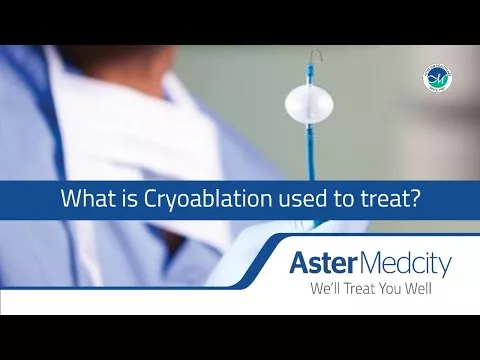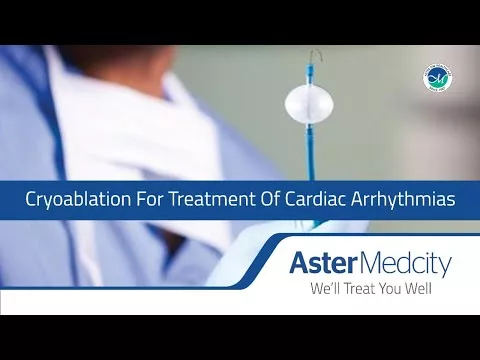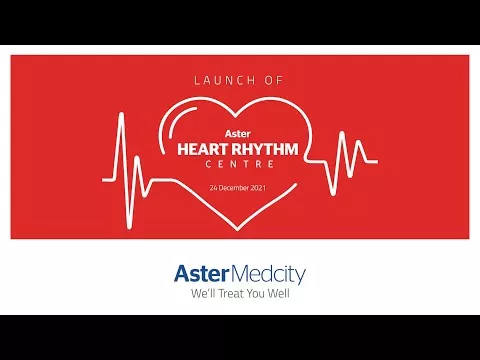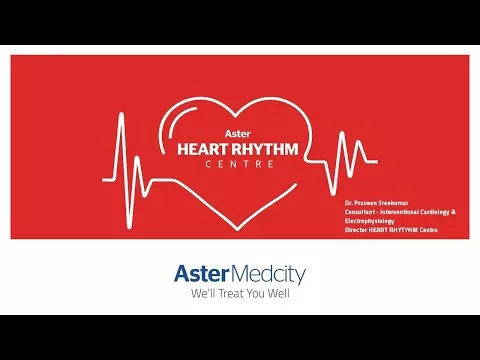What is Implantable cardioverter defibrillator (ICD) Therapy?
Implantable cardioverter defibrillator (ICD) therapy is a medical treatment used to manage life-threatening cardiac arrhythmias, specifically ventricular tachycardia and ventricular fibrillation. These arrhythmias can cause the heart to beat too fast or irregularly, leading to a sudden loss of blood flow and potentially resulting in cardiac arrest or sudden cardiac death. An ICD is a small electronic device that is surgically implanted beneath the skin, usually in the upper chest area, and connected to the heart with one or more leads (thin insulated wires). The device continuously monitors the heart's electrical activity, and when it detects a dangerous arrhythmia, it delivers a controlled electrical shock to restore the heart's normal rhythm.
Here's how the process generally works:
- Detection: The ICD constantly monitors the heart's electrical signals for any abnormal rhythms. It can differentiate between normal heart rhythms and potentially life-threatening arrhythmias.
- Therapy Delivery: If a dangerous arrhythmia is detected, the ICD delivers an electrical shock or series of shocks to restore a normal heart rhythm. This is known as defibrillation. The shocks are designed to be strong enough to stop the arrhythmia but not harm the patient.
- Anti-Tachycardia Pacing: In addition to defibrillation, ICDs can also deliver low-energy electrical impulses known as anti-tachycardia pacing (ATP). ATP aims to correct certain rapid heart rhythms by pacing the heart at a faster rate or interrupting the abnormal electrical pathways.
- Monitoring and Data Storage: ICDs continuously monitor the heart's activity and record data on detected arrhythmias, therapy delivered, and other important information. This data can be later reviewed by healthcare professionals to assess the patient's condition and adjust the device's settings if necessary.
ICD therapy is typically recommended for individuals who are at high risk of sudden cardiac death due to a history of ventricular tachycardia, ventricular fibrillation, or certain heart conditions such as cardiomyopathy or coronary artery disease. The decision to implant an ICD is made by a cardiologist or electrophysiologist based on the patient's medical history, symptoms, and overall health.
Why and when Implantable cardioverter defibrillator (ICD) Therapy is recommended?
Implantable cardioverter defibrillator (ICD) therapy is recommended in certain situations to manage and prevent life-threatening cardiac arrhythmias. Here are some common scenarios in which ICD therapy may be recommended:
- History of Ventricular Tachycardia (VT) or Ventricular Fibrillation (VF): If a person has experienced episodes of sustained ventricular tachycardia or ventricular fibrillation, which are dangerous arrhythmias that can lead to sudden cardiac death, an ICD may be recommended. The device can deliver a shock to restore a normal heart rhythm in the event of a recurrence.
- Survivors of Cardiac Arrest: If someone has survived sudden cardiac arrest, which is a sudden loss of heart function, an ICD may be recommended to prevent future episodes. The device can quickly deliver a shock to restore a normal rhythm and potentially save the person's life.
- High Risk of Ventricular Arrhythmias: Certain individuals with a high risk of developing life-threatening ventricular arrhythmias may be candidates for ICD therapy. This includes individuals with specific types of heart conditions, such as ischemic cardiomyopathy (caused by coronary artery disease) or non-ischemic cardiomyopathy (caused by other factors), as well as certain genetic heart conditions.
- Heart Failure: In some cases of heart failure, particularly when the heart's pumping function is significantly impaired (reduced ejection fraction), an ICD may be recommended. The device can not only treat ventricular arrhythmias but also provide additional therapies, such as cardiac resynchronization therapy (CRT), which can improve the heart's pumping efficiency.
The decision to recommend ICD therapy is made by a cardiologist or electrophysiologist based on a comprehensive evaluation of the patient's medical history, symptoms, underlying heart condition, and overall health. Various factors are considered, including the individual's risk of sudden cardiac death, the likelihood of arrhythmia recurrence, and the potential benefits and risks of the therapy. It's important to note that ICD therapy is typically recommended for individuals who are at high risk of life-threatening arrhythmias and not as a first-line treatment for all cardiac arrhythmias. The specific indications for ICD therapy may vary depending on guidelines and individual patient factors, so it's crucial to consult with a cardiac electrophysiologist for personalized advice.
How does Implantable cardioverter defibrillator (ICD) Therapy differ from other treatment options?
Implantable cardioverter defibrillator (ICD) therapy differs from other treatment options for managing cardiac arrhythmias in several ways. Here are some key differences:
- Immediate Response to Life-Threatening Arrhythmias: One of the primary advantages of ICD therapy is its ability to deliver an immediate response to life-threatening ventricular arrhythmias. When an ICD detects a dangerous arrhythmia, it can deliver a high-energy shock to restore a normal heart rhythm within seconds. This rapid intervention can be crucial in preventing cardiac arrest and sudden cardiac death.
- Automatic Detection and Treatment: ICDs are equipped with sophisticated technology that continuously monitors the heart's electrical activity. They can automatically detect and differentiate between normal heart rhythms and dangerous arrhythmias, without the need for external intervention or manual activation. This feature ensures timely treatment delivery, even if the person is unaware of the arrhythmia or unable to seek immediate medical help.
- Continuous Monitoring and Data Storage: ICDs have the capability to continuously monitor the heart's activity and store data on detected arrhythmias, therapy delivered, and other relevant information. This data can be later analyzed by healthcare professionals to assess the patient's condition, evaluate the effectiveness of the therapy, and make any necessary adjustments to the device's settings.
- Combination of Defibrillation and Pacing: ICDs provide both defibrillation and pacing functions. Defibrillation involves delivering a high-energy shock to stop a life-threatening arrhythmia, while pacing involves delivering low-energy electrical impulses to correct certain rapid heart rhythms. This dual capability allows ICDs to treat a wide range of arrhythmias effectively.
- Potential for Additional Therapies: In some cases, ICDs can provide additional therapies beyond defibrillation. For instance, certain devices may incorporate cardiac resynchronization therapy (CRT) functionality. CRT uses additional leads and pacing techniques to improve the coordination and efficiency of the heart's pumping action, particularly in individuals with heart failure and electrical conduction abnormalities.
It's important to note that the choice of treatment depends on various factors, including the specific type and severity of the arrhythmia, the underlying heart condition, the individual's overall health, and personal preferences. Other treatment options for managing cardiac arrhythmias may include medication, catheter ablation, anti-arrhythmic devices, or a combination of therapies. The decision is made by cardiac electrophysiologists in collaboration with the patient, considering the risks, benefits, and individual circumstances.
How is life after Implantable cardioverter defibrillator (ICD) Therapy?
Life after receiving an Implantable Cardioverter Defibrillator (ICD) can vary from person to person. Here are some general considerations and experiences:
- Protection and Peace of Mind: Having an ICD can provide a sense of security and peace of mind, knowing that the device is continuously monitoring your heart and ready to deliver a life-saving shock if needed. This can alleviate anxiety about sudden cardiac death and provide reassurance for many individuals.
- Adjustment Period: It's common to go through an adjustment period after receiving an ICD. You may have physical discomfort at the implantation site initially, but this typically subsides with time. Mentally and emotionally, it can take some time to adapt to having an implanted device and understanding its functions.
- Lifestyle Modifications: While an ICD can greatly enhance safety, there may be some lifestyle modifications to consider. In general, most activities can be resumed after recovery from the implantation procedure, but it's important to discuss specific guidelines and restrictions with your healthcare team. Contact sports or activities that carry a higher risk of physical impact may need to be avoided or approached with caution.
- Regular Follow-up Care: After receiving an ICD, you will need regular follow-up appointments with your healthcare team. These visits typically involve device checks, which are non-invasive and involve reviewing the device's performance, adjusting settings if necessary, and assessing battery life. It's important to attend these appointments to ensure the proper functioning of the device and address any concerns.
- Medications: Depending on your specific heart condition, you may be prescribed medications in addition to the ICD. It's important to adhere to your medication regimen as prescribed by your healthcare provider and to discuss any concerns or potential interactions with your healthcare team.
- Travel and Security Measures: If you plan to travel, it's important to inform airport security personnel about your ICD. The device may set off metal detectors, and you may need to undergo a manual security screening. Carrying your ICD identification card or a letter from your healthcare provider can be helpful.
- Battery Replacement: ICDs have batteries that last several years. When the battery nears its end of life, you will need a replacement procedure, which is typically less involved than the initial implantation. Your healthcare team will monitor the battery life and schedule the replacement procedure when needed.
It's essential to maintain open communication with your healthcare team, follow their recommendations, and seek their guidance whenever you have questions or concerns about living with an ICD. They can provide personalized advice based on your specific circumstances.
FAQs
At Aster Hospitals we provide the highest quality of care and a transformative experience for all your healthcare needs. With our network of multi-speciality hospitals, specialised doctors, and world-class technology, we bring global standards of medical care to our patients.
How does an ICD work?
An ICD continuously monitors the heart's electrical activity. When it detects an abnormal and potentially life-threatening rhythm, it delivers electrical shocks or pacing to restore a normal heart rhythm. The shocks, known as defibrillation, help to terminate dangerous arrhythmias, while the pacing feature can provide therapy for slower heart rhythms.
How is an ICD implanted?
ICD implantation is typically performed in a cardiac catheterization laboratory or operating room. A small incision is made near the collarbone, and one or more leads (thin wires) are inserted into the veins and guided to the heart. The leads are then connected to the ICD generator, which is placed under the skin. Once the leads are in position, they are tested to ensure proper function.
Blogs
The source of trustworthy health and medical information. Through this section, we provide research-based health information, and all that is happening in Aster Hospital.








